Related Research Articles
Colonel Charles Swinhoe was an English naturalist and lepidopterist, who served in the British Army in India. He was one of the eight founders of the Bombay Natural History Society and a brother of the famous naturalist Robert Swinhoe.

Utetheisa is a genus of tiger moths in the family Erebidae. The genus was first described by Jacob Hübner in 1819.
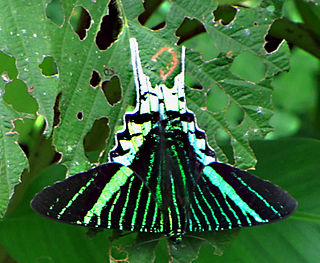
The Uraniinae or uraniine moths are a subfamily of moths in the family Uraniidae. It contains seven genera that occur in the tropics of the world.

Spilomelinae is a very species-rich subfamily of the lepidopteran family Crambidae, the crambid snout moths. With 4,132 described species in 340 genera worldwide, it is the most speciose group among pyraloids.

Lymantria is a genus of tussock moths in the family Erebidae. They are widely distributed throughout Europe, Japan, India, Sri Lanka, Myanmar, Java, and Celebes. The genus was erected by Jacob Hübner in 1819.
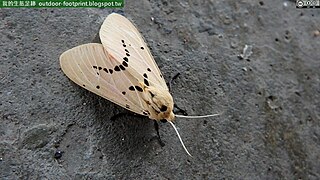
Spilarctia is a genus of moths in the family Erebidae. The genus was erected by Arthur Gardiner Butler in 1875.
Endocrossis is a genus of moths of the family Crambidae.
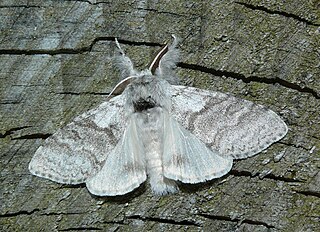
Calliteara is a genus of tussock moths in the family Erebidae. The genus was erected by Arthur Gardiner Butler in 1881.

Chrysocraspeda is a genus of moths in the family Geometridae described by Charles Swinhoe in 1893.

Herochroma is a genus of moths in the family Geometridae. The genus was described by Charles Swinhoe in 1893.
Grammodes cooma is a moth of the family Noctuidae first described by Charles Swinhoe in 1900. It is known from the Australian state of Queensland and the Indonesia's Ambon Island.
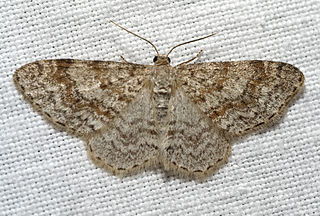
Asthenini is a tribe of geometer moths under subfamily Larentiinae first described by Warren in 1893. The tribe has been combined with Eupitheciini in the past, most notably by Jeremy Daniel Holloway in his work The Moths of Borneo.

Endocrossis flavibasalis is a species of moth of the family Crambidae. It is found in India, China, Burma, Sumatra and New Guinea.
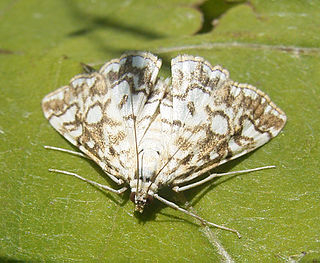
Acentropinae is a fairly small subfamily of the lepidopteran family Crambidae, the crambid snout moths. Species of this subfamily are exclusively found in wetlands and aquatic habitats.
Rhodostrophiini is a tribe of the geometer moth family (Geometridae), with about 200 species in 17 genera and five genera tentatively associated with the tribe.
Cybalomiinae is a subfamily of the lepidopteran family Crambidae. It was described by Hubert Marion in 1955.
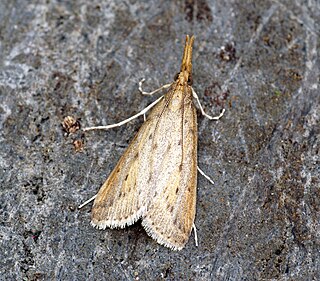
Schoenobiinae is a subfamily of the lepidopteran family Crambidae. The subfamily was described by Philogène Auguste Joseph Duponchel in 1846.
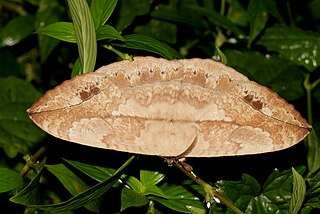
Eupterote is a genus of moths in the family Eupterotidae. It was first described by Jacob Hübner in 1820.
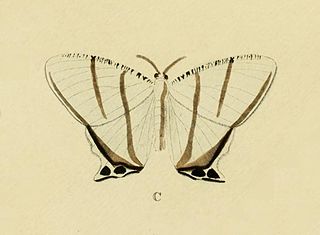
Cyphura is a genus of moths in the family Uraniidae. The genus was erected by William Warren in 1902.

Margaroniini is a tribe of the species-rich subfamily Spilomelinae in the pyraloid moth family Crambidae. The tribe was erected by Charles Swinhoe and Everard Charles Cotes in 1889.
References
- ↑ Swinhoe, 1916. "New Species of Butterflies and Moths". Annals and Magazine of Natural History. (8) 18 (108): 488.
| This Margaroniini-related article is a stub. You can help Wikipedia by expanding it. |